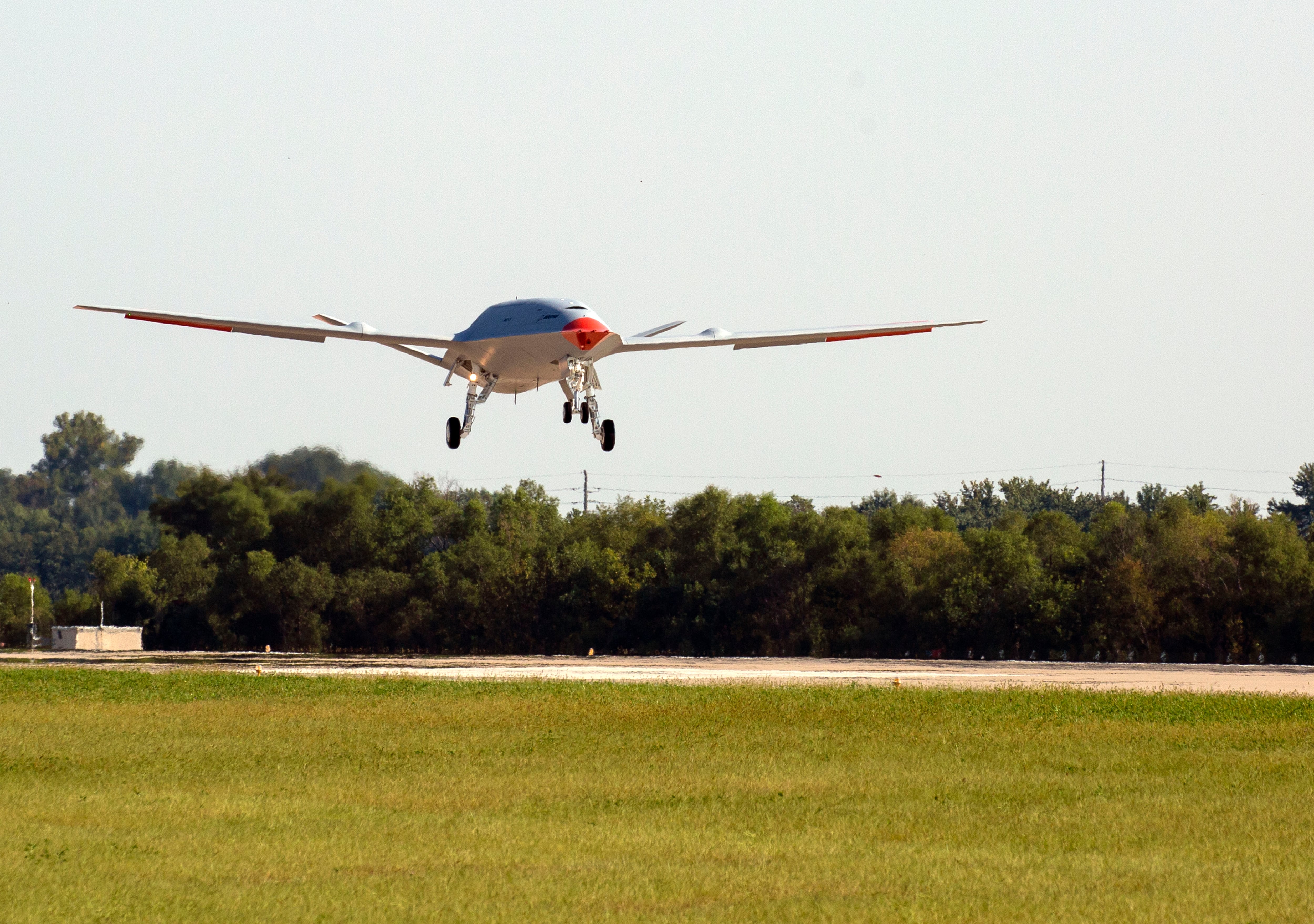WASHINGTON — Boeing is set to roll out the first “Loyal Wingman” drone for the Royal Australian Air Force during a Tuesday morning ceremony, putting the RAAF high on the list of countries experimenting with autonomous aircraft.
“This a truly historic moment for our country and for Australian defense innovation,” said Australian Prime Minister Scott Morrison. “The Loyal Wingman will be pivotal to exploring the critical capabilities our Air Force needs to protect our nation and its allies into the future.”
RELATED

The RAAF plans to buy three drones, which Boeing calls the Airpower Teaming System, as part of the Loyal Wingman Advanced Development Program.
Over a series of flight tests and demonstrations, the RAAF hopes to figure out how to best integrate drones with fighter jets and other combat aircraft, allowing the air force to keep pilots safe by putting lower cost unmanned assets at risk during a fight.
“Autonomy is a big element of this, as well as the incorporation of artificial intelligence. Those two elements combined enable us to support existing forces,” said Jerad Hayes, Boeing’s senior director for autonomous aviation and technology.
The ATS is semi-autonomous, meaning that fighter pilots will not have to remotely control the maneuvers of the drone, said Shane Arnott, Boeing’s ATS program director.
“When you are teaming, say with a Super Hornet, they don’t have the luxury during combat maneuvers or operations to be remotely piloting another aircraft while doing their own,” he said.
But one of the biggest technical questions still remains: How much data should be transferred from the ATS to the cockpit of the manned aircraft controlling it, and when does that turn into information overload? That question is one Boeing wants to answer more definitively once ATS makes its first flight later this year and moves into its experimentation phase, Arnott said.
“There’s a lot for us to figure out [on] what’s that right level of information feed and direction. One of the great benefits of working with the Royal Australian Air Force is having the real operators [give feedback],” he said. “We don’t have all the answers yet. We have a lot of understanding through our surrogate simulator and surrogate testing that we’re doing, but we will prove that out.”
Boeing first introduced the Airpower Teaming System at the Australian International Airshow at Avalon in February 2019, when the company unveiled a full-scale model. Since then, the company has moved quickly to fabricate the first of three aircraft, completing the fuselage structure this February. In April, the aircraft stood on its own wheels for the first time and powered on.
The ATS air vehicle is 38 feet long, with a removable nose that can be packed with mission-specific sensors and other payloads. Throughout the design process, Boeing simulated a “digital twin” of the aircraft that allowed it to virtualize the operation of the aircraft, as well as how it would be produced and maintained.
It also saved money by incorporating resin-infused composite structures, including one that is the largest piece Boeing has ever manufactured using that technique, Hayes said. That large structure snaps into another to form the plane’s wings, cutting down on the manpower needed to fabricate the aircraft.
While the drone’s sleek, twin-tailed design is simple, with only four moving surfaces, it was carefully composed to optimize the aircraft’s survivability, maneuverability and cost, Arnott said.
While Arnott wouldn’t talk about the stealth features of the aircraft, he noted that “there was a lot of thought put into getting that right balance of ‘good enough’ across the board, and [radar] signature is obviously an aspect, and affordability is a big one.”
Boeing officials have also declined to comment on the price of the aircraft, but Arnott and Hayes made it clear that Boeing intends to keep it cost-competitive with its main competitor, Kratos Defense and Security’s XQ-58 Valkyrie.
The U.S. Air Force has expressed interest in procuring Valkyrie for the loyal wingman role and to host communications relay payloads that would allow the F-35 and F-22 to share data stealthily.
Boeing is also engaged with the U.S. military about potential uses of the ATS, Hayes asid.
“We see the Airpower Teaming System platform as capable of going against many different mission sets, and as such, we’re engaging across the Department of Defense to understand their specific mission need, what their requirements are for those, and understanding exactly how the Airpower Teaming System fits those,” he said.
The nose — which is 8.5 feet long with more than 90k cubic inches volume — is key to the company’s strategy to sell the system outside of Australia, Arnott said. Boeing envisions working with international customers to create customized modular payloads that could be built with the help of indigenous suppliers, thus increasing its appeal.
“The industrial aspect of this is of a lot of interest for a number of countries,” said Arnott. “Being able to do meaningful work on the systems to the extent of creating whole new payloads or role capability is of great interest.”
Valerie Insinna is Defense News' air warfare reporter. She previously worked the Navy/congressional beats for Defense Daily, which followed almost three years as a staff writer for National Defense Magazine. Prior to that, she worked as an editorial assistant for the Tokyo Shimbun’s Washington bureau.








